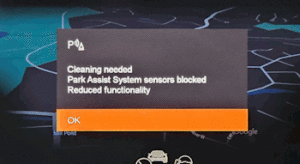Buick Dashboard Symbols We just finished updating our Buick Dashboard Symbols page, or at least we tried. Generally, updating a manufacturer’s symbols page results in the addition of at least a half a dozen new symbols. This site now hosts over 1,000 symbols and telltales found on instrument panels. In this case, and despite the …
Tag: instrument panel
Permanent link to this article: https://dashboardsymbols.com/2024/09/new-entry-to-our-acronym-page/
Permanent link to this article: https://dashboardsymbols.com/2024/08/2024-buick-dashboard-symbols-update-brings-a-surprise/
Evasive Maneuver Warning Indicators
Evasive Maneuver This is an Evasive Maneuver Warning (EMA) or Evasive Steering Assistance (ESA) indicator symbol. Working with Polestar‘s Advanced Driver Assistance Systems, ESA adds technical assistance to steering to aid in avoiding a collision. It effectively enhances a driver’s reflexes by adding extra steering torque and uses data from the vehicle’s front-mounted camera and …
Permanent link to this article: https://dashboardsymbols.com/2024/08/evasive-maneuver-warning-indicator/
At Last a Useful Warning on an Automotive Instrument Panel!
A Useful Warning! Today has been cold with light snow. Coupled with the salts dropped on the pavement, this made for very dirty spray all over everyone’s car, including mine. As a result, when I slowed to park the warning below was displayed in the center of my instrument panel… We have railed for years …
Permanent link to this article: https://dashboardsymbols.com/2024/01/at-last-a-useful-warning-on-an-automotive-instrument-panel/
The Ever-growing Dashboard Symbols Saga…
A Short History Some 13 years ago when we started this site, we believed that the driving public had no idea what it was up against in trying to understand the warning lights and dashboard symbols being thrown at them by their car’s instrument panel. We had no idea where this would lead. The Symbols …
Permanent link to this article: https://dashboardsymbols.com/2023/12/the-ever-growing-dashboard-symbols-saga/
Are You Seeing a Horseshoe-shaped Dashboard Warning Light?
What is the Horseshoe-shaped Dashboard Warning Light? At this writing, its cold weather time again and time again to speak about the Tire Pressure Monitoring System (TPMS), and its associated warning light(s). Every year several million more drivers who have recently upgraded their cars will encounter the light for the first time. These are two …
Permanent link to this article: https://dashboardsymbols.com/2023/12/are-you-seeing-a-horseshoe-shaped-warning-light/
Shift to Park Dashboard Warning
Shift to Park This is a Shift to Park Dashboard Warning symbol. The light will blink red and a chime will sound if the ignition switch is turned off while the vehicle is not in Park. Move the shift lever or touch the Park button to turn off the light. The chime will sound until …
Permanent link to this article: https://dashboardsymbols.com/2023/03/shit-to-park-warning/



New entry to our Acronym Page
Acronym Page Update We added a new set of indicators for a new system called Lane Following Assist (LFA). This resulted in a new entry to our acronym page. Sometimes, a symbol or indicator seen on an instrument panel and hosted here on the site is in the form of a three or four letter …
Continue reading